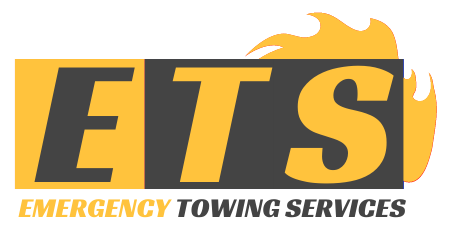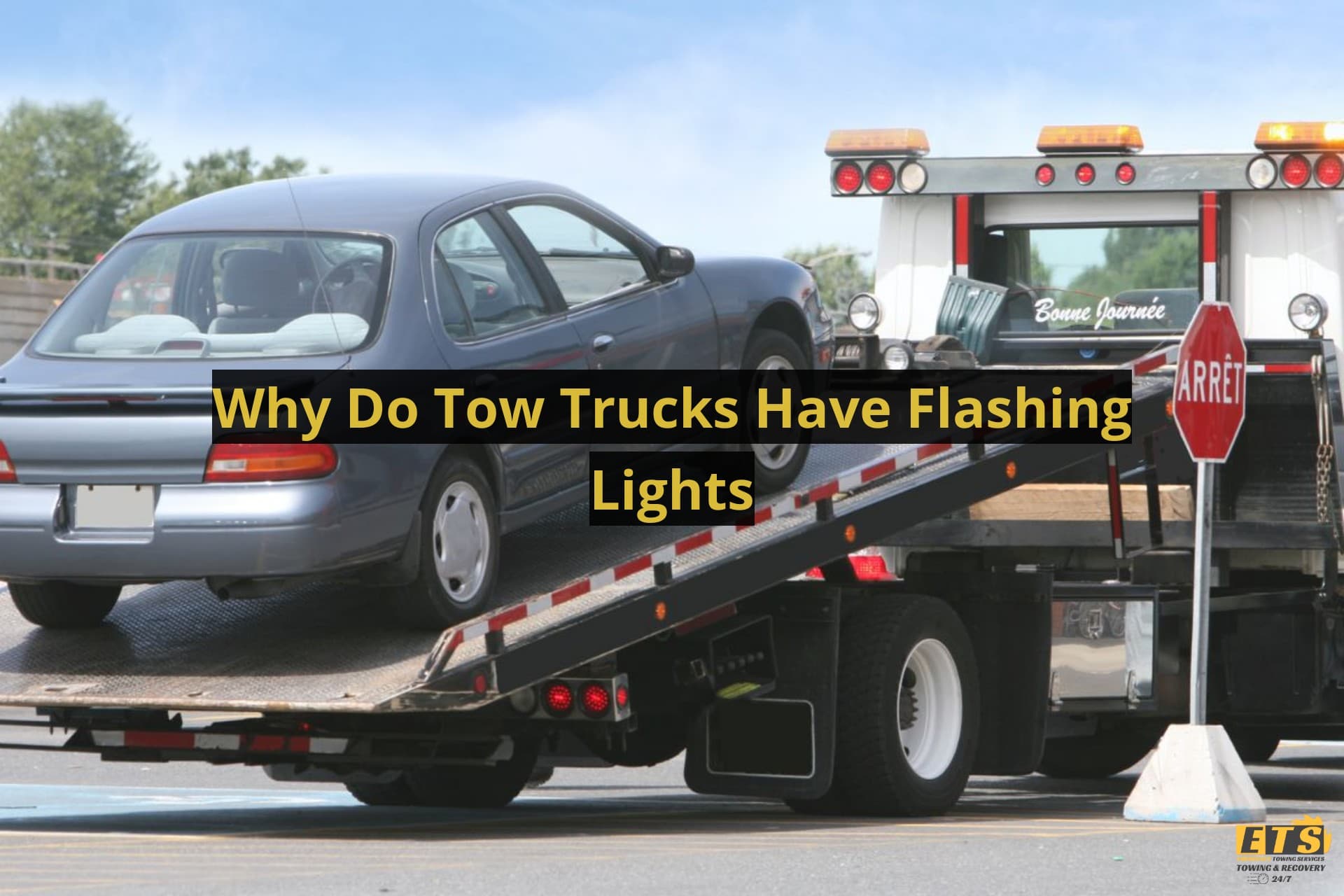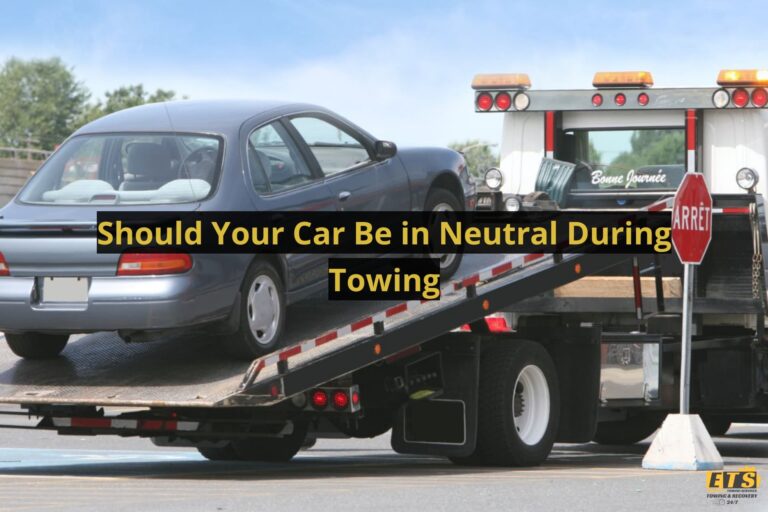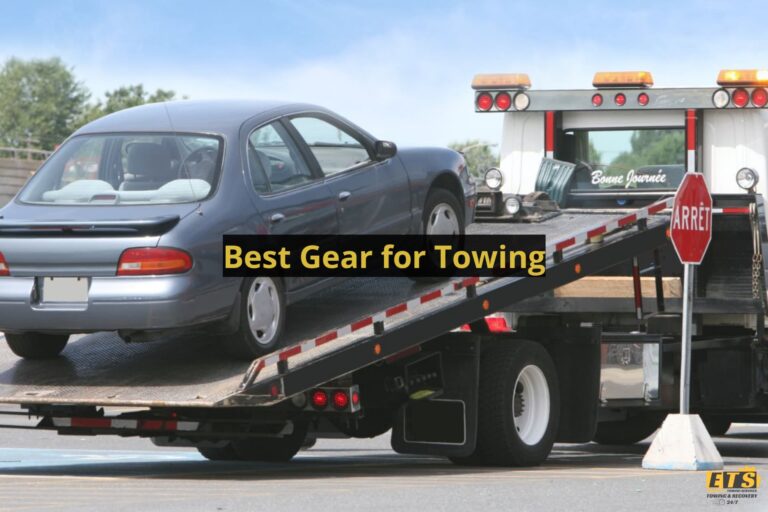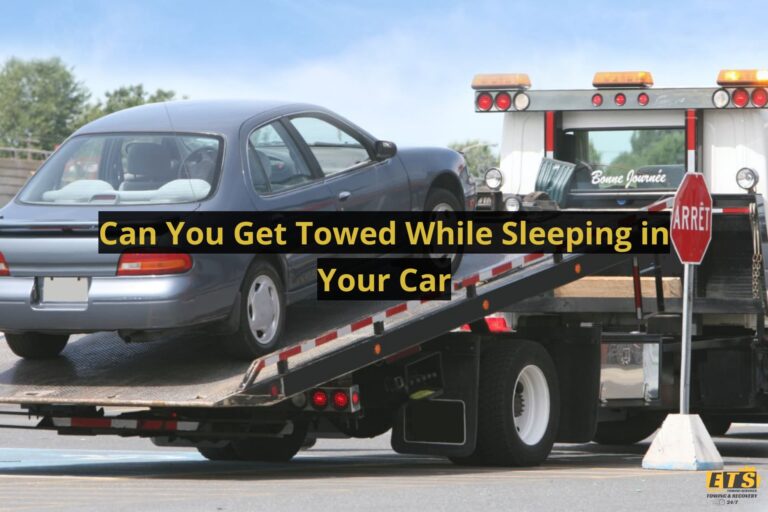Why Do Tow Trucks Have Flashing Lights
The information presented in this article is provided for general informational purposes only, and may not reflect the current laws or legal developments. This article does not constitute legal advice, and the reader should not act on the information contained in this article without first seeking professional counsel. We make no guarantees about the accuracy, completeness, or adequacy of the information contained in this article. The reader assumes all risks and liabilities associated with any actions taken as a result of reading this article. To obtain legal advice on your specific matter, please contact a qualified legal professional.
Have you ever wondered why tow trucks have flashing lights? You’ve probably seen them on the side of the highway or in a parking lot, with their beacons signaling to other drivers that there’s something going on. But what’s the reason behind this common practice?
Tow truck drivers use flashing lights for a variety of reasons. Firstly, it helps them stand out on busy roads and highways, making it easier for passing motorists to see them and avoid collisions.
It also alerts other drivers that there is some type of road work being carried out, which means they need to slow down and proceed carefully. Additionally, tow trucks may sometimes need to block off parts of the roadway while they are working, so having flashing lights makes it clear where they are located and ensures everyone stays safe.
Understanding why tow trucks have these distinctive lights can help us all stay safer when we’re sharing the road with them.
Enhancing Visibility On Busy Roads
Driving on busy roads can be a challenging task, especially during nighttime or adverse weather conditions. To ensure safety and effectiveness in towing vehicles, tow trucks are equipped with flashing lights.
These flashing lights serve multiple benefits and applications that enhance visibility for both the tow truck driver and other drivers on the road. One of the primary advantages of having flashing lights is improved visibility. The bright and eye-catching flashes alert approaching motorists to slow down and move over, giving ample time and space for the tow truck driver to maneuver safely.
Furthermore, these lights also make it easier for the driver to locate stranded vehicles at night by illuminating their surroundings. Apart from improving visibility, tow truck flashing lights also indicate an emergency situation happening on the road. It serves as a warning sign to other drivers, reminding them to stay cautious and follow traffic rules strictly.
This feature reduces accidents caused by speeding drivers who fail to see or ignore signals from regular hazard warning signs placed along highways. Tow trucks play a critical role in ensuring smooth traffic flow despite any unforeseen circumstances. By equipping themselves with flashing lights, they provide additional safety measures for all parties involved while enhancing their overall efficiency.
Signaling Road Work And Hazards
As we discussed earlier, enhancing visibility on busy roads is crucial for ensuring safety. One of the ways to achieve this is by using flashing lights.
Tow trucks often have flashing lights because they provide roadside assistance and emergency response services. When a tow truck operator arrives at an accident scene, their flashing lights alert other drivers of potential hazards ahead. This helps prevent further accidents from occurring and ensures that everyone involved in the incident remains safe.
In addition, tow trucks may also use their flashing lights as a signal for motorists to pull over or move aside on highways or expressways where there’s construction work taking place or road hazards present. The bright flashing lights help draw attention to the situation so that drivers can take necessary precautions and avoid any mishaps while driving through such areas.
Protecting Tow Truck Drivers And Passengers
Safety regulations are a key part of protecting tow truck drivers and passengers. They ensure that all tow truck drivers are properly trained and that the vehicles they use are up to safety standards.
Driver training is also vital, as it teaches drivers how to properly handle the vehicles and how to respond to dangerous situations. With proper regulations and training, we can ensure that tow truck drivers and passengers are kept safe.
Safety Regulations
As you drive down the highway, it’s not uncommon to see a tow truck flashing its lights on the side of the road. These lights aren’t just for show – they serve an important purpose in keeping both tow truck drivers and passengers safe.
In fact, there are strict safety regulations that tow truck companies must comply with in order to protect everyone involved. Compliance challenges can arise when it comes to these safety regulations. For example, some states require tow trucks to have specific types of lighting or reflective materials in order to be visible from a certain distance away.
Ensuring all vehicles meet these requirements can be difficult, especially for smaller towing companies who may not have as many resources available. However, it’s crucial that these compliance challenges are addressed because failing to do so can have serious legal implications.
If a driver or passenger is injured due to inadequate lighting or other safety measures, the towing company could face lawsuits and hefty fines. By following proper safety protocols and staying up-to-date on any changes in regulations, tow truck companies can avoid these legal issues while also protecting their employees and customers alike.
Driver Training
As discussed in the previous subtopic, safety regulations are essential for protecting both tow truck drivers and passengers. Compliance challenges can arise when it comes to these regulations, such as having specific types of lighting or reflective materials on tow trucks. However, another critical aspect that plays a vital role in ensuring safety is driver training.
Simulation exercises and instructional materials are two primary tools used by towing companies to train their drivers properly. These methods provide hands-on experience for potential emergency situations they may encounter while out on the job.
For example, simulation exercises can simulate various scenarios like changing tires on busy highways or recovering vehicles from ditches without putting anyone at risk.
Instructional materials also play an important role in driver training, providing education about safe driving practices, vehicle handling techniques, and equipment usage. By learning how to operate different types of winches correctly and using proper protective gear consistently, tow truck drivers can avoid accidents leading to injury or even death.
In conclusion, driver training is crucial for protecting both tow truck drivers and passengers alike. Simulation exercises and instructional materials help ensure that all employees have the skills necessary to handle any situation safely.
By investing in proper training programs regularly, towing companies can minimize risks associated with accidents while maintaining compliance with safety regulations.
Preventing Collisions And Accidents
Some people believe that tow trucks have flashing lights solely for aesthetic purposes. However, this is not entirely true.
One of the main reasons why tow trucks utilize these blinking lights is to ensure nighttime safety on the road. During emergencies or accidents, it’s important for tow truck drivers and other emergency responders to be easily identifiable from afar. The flashing lights act as a warning signal to other motorists, indicating that there is an ongoing operation in progress. This helps prevent collisions and accidents while also alerting drivers to slow down and proceed with caution.
Moreover, the flashing lights increase the visibility of tow trucks during inclement weather conditions such as heavy rain or snowfall. In situations where visibility is low, having bright flashing lights can make all the difference when it comes to preventing potential collisions on the roadways.
Thus, it contributes greatly towards ensuring emergency response efficiency and effectiveness by avoiding further unnecessary accidents or disruptions.
Overall, incorporating flashing lights into tow trucks has proven to be an effective measure in promoting nighttime safety and enhancing emergency response efforts on our roads today. It underscores how small but impactful measures can significantly contribute towards keeping us safe whilst we travel from one point to another amidst unpredictable circumstances.
Following State And Federal Regulations
Tow trucks are required by law to have flashing lights when operating on public roads. Legal requirements mandate that tow trucks must display these warning lights in order to ensure the safety of everyone involved. These regulations vary depending on the state or municipality, but generally require a combination of yellow and red flashing lights.
Safety concerns play an integral role in why tow trucks need to use flashing lights while towing vehicles. The bright and visible nature of these warning signals alerts motorists to be cautious around the truck and any disabled vehicle it is towing. This is especially important during nighttime hours or inclement weather conditions where visibility can become limited.
Additionally, tow truck drivers themselves also rely on their flashing lights for protection as they work alongside busy roadways. By providing ample warning to other drivers, tow truck operators reduce their risk of being hit while performing their duties. These measures help keep both the driver and anyone nearby safe from potential harm.
Here are four legal requirements regarding tow truck lighting:
- Tow trucks must display at least two amber-colored flashing strobe lights mounted above the roofline.
- Red flashing lights may only be used if there is a stationary hazard present.
- Amber rotating beacon light may not be used unless the vehicle exceeds 80 inches in width or protrudes more than six inches on each side.
- Warning flags should be placed conspicuously on all sides of any load extending beyond the rear bumper or tailgate by four feet or more.
By following these legal requirements and taking appropriate safety precautions with their equipment, tow truck operators can continue safely executing their vital services on our highways and roadways without endangering themselves or others nearby.
Meeting Industry Standards And Best Practices
There is a common belief that tow trucks have flashing lights purely for safety reasons. While it’s true that the lights serve as a warning to other drivers on the road, there are also industry standards and best practices at play here.
One such standard is for tow truck branding. In order to stand out in a competitive market, many towing companies use flashy colors and graphics on their vehicles. The addition of flashing lights further enhances their visibility and helps them attract more business.
Marketing strategies also come into play when it comes to tow truck lighting. Some companies choose to install unique light patterns or alternating colors in order to make their trucks more memorable and easily recognizable by potential customers.
| Advantages | Disadvantages |
|---|---|
| Increased Visibility | Potential Distraction |
| Enhanced Safety | Higher Costs |
| Improved Branding | Environmental Impact |
It’s important to note that while having flashing lights can be beneficial, there are also some drawbacks associated with them. For example, they may become a distraction for other drivers on the road or contribute to light pollution in urban areas.
In conclusion, while safety is certainly one reason why tow trucks have flashing lights, there are many other factors at play as well. From industry standards and marketing strategies to advantages and disadvantages, these lights serve multiple purposes beyond just warning others of an approaching vehicle.
Using Different Light Colors And Patterns
After discussing the importance of meeting industry standards and best practices, it’s time to focus on a specific aspect – why tow trucks have flashing lights. These vehicles are equipped with different light colors and patterns that serve various purposes.
Firstly, light synchronization is crucial for ensuring safety on the road. The flashing lights help alert other drivers of an emergency situation or hazard present in the area. By synchronizing these lights, tow truck operators can better manage traffic flow and avoid accidents.
Secondly, aside from their functional purpose, flashing lights also have a psychological impact. They grab people’s attention and signal authority. This effect helps improve compliance among motorists who may otherwise ignore warning signs or directions.
Lastly, using different light colors and patterns allows tow trucks to communicate more effectively with other emergency responders. Sharing information about a scene through coordinated lighting sequences improves response times and ensures smooth cooperation during critical situations.
To sum up, tow trucks use flashing lights as both a functional tool for managing traffic and as a way to convey authority to motorists. Light synchronization is important for maintaining order on the roads while improving communication between emergency services personnel.
Maintaining And Repairing Flashing Lights
Maintaining and repairing flashing lights on tow trucks is crucial for their functionality. Without the bright, attention-grabbing lights, it would be difficult to alert other drivers of an impending tow truck operation. In fact, not having working lights can put both the operator and other motorists in danger.
One way to ensure that the flashing lights are always functioning properly is by regularly replacing bulbs as needed. Over time, these bulbs can burn out or become damaged due to frequent use or exposure to harsh weather conditions. By checking them periodically and replacing any that are faulty, operators can avoid potentially hazardous situations on the road.
Another important aspect of maintaining flashing lights is checking wiring. Loose or frayed wires can cause issues with the electrical system which could lead to a malfunctioning light display. Periodic checks will allow you to catch any problems early on before they escalate into more serious issues requiring expensive repairs or replacements.
By following these simple maintenance tips, tow truck operators can rest assured that their flashing lights will remain functional when they need them most. Remember to replace bulbs as necessary and check wiring often for optimal performance on the road!
Conclusion
So, why do tow trucks have flashing lights?
The answer is simple: to enhance visibility on busy roads, signal road work and hazards, protect drivers and passengers, prevent collisions and accidents, follow state and federal regulations, meet industry standards and best practices, use different light colors and patterns, as well as maintain and repair the flashing lights.
Now some may argue that having flashing lights on a tow truck isn’t necessary or even distracting. However, when you’re stuck on the side of the road in a dangerous situation or driving by an accident scene where tow trucks are present, those flashing lights can make all the difference in keeping everyone safe.
So next time you see a tow truck with its flashing lights on, remember that it’s not just for show – it’s there to keep us all protected while navigating our way through busy streets.
